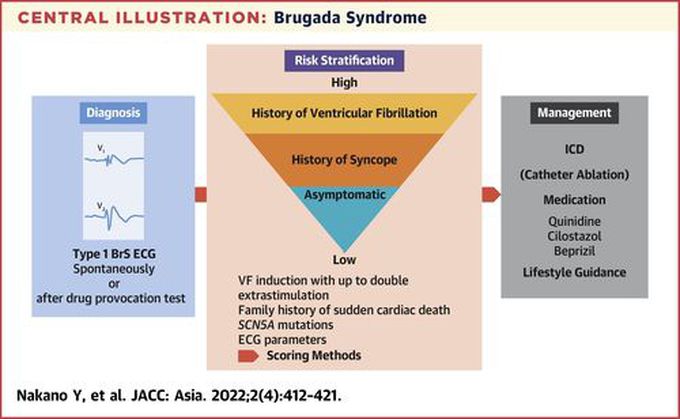


How is Brugada syndrome diagnosed?
Brugada syndrome is usually diagnosed by an electrocardiogram (ECG) test showing the characteristic ‘Brugada pattern’. Your doctor may identify this during a routine ECG test without you experiencing any symptoms. Your doctor may also perform an ECG after you have palpitations or have fainted, or after you are resuscitated from a cardiac arrest. Sometimes, it takes more than one ECG to diagnose Brugada syndrome, because the typical Brugada pattern doesn't occur all the time. If your doctor suspects Brugada syndrome, you may be given a specific medicine to see if this brings on changes in your ECG. This test is done in hospital so you can be monitored for symptoms and any problems can be identified and treated quickly. You might need to have an electrophysiology study. This allows your doctor to see how your heart responds to electrical stimuli (triggers), and help your doctor bring on and record an abnormal heart rhythm (arrhythmia). If a family member has Brugada syndrome, your doctor may recommend genetic testing for the faulty gene. However, genetic screening won’t find all cases. A negative screening result doesn't mean that you don't have Brugada syndrome. You can read more about genetic testing here. Your doctor may refer you to a cardiologist for diagnosis and management.

